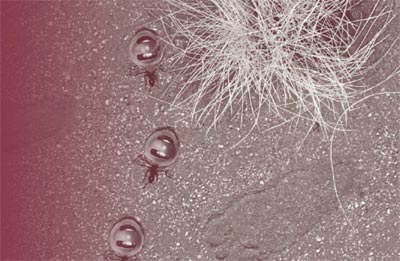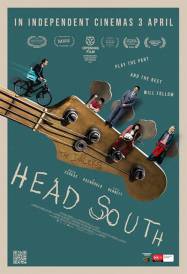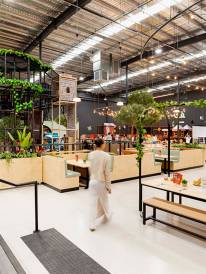Papunya Painting Out of the Desert

Discover the rich and special meanings behind Indigenous dot patterning in Papunya Painting: Out of the Desert.
Featuring a stunning collection of rarely seen artworks, Papunya Painting: Out of the Desert will answer all the questions you have wanted to ask about this unique style of Indigenous art.
Opening at the Australian Museum this July, local audiences will be treated to a spectacular exhibition that will transport people of all ages into the epicentre of Western Desert Aboriginal culture right in the heart of Sydney.
For the first time in a major public exhibition, Papunya Painting: Out of the Desert, brings together some of the early masterpieces of the renowned Papunya Tula art movement that spanned the 1970s and early 1980s.
Set against the backdrop of their desert studio at Papunya in Australias Northern Territory, Central and Western Desert artists created a body of work that transformed understandings of Aboriginal art.
On large canvases and suitcase-sized boards they experimented with colour and style to tell their Dreaming stories linked to land, nation, people and history while uncovering the perpetuation of a living culture.
Developed and presented by the National Museum of Australia, almost 50,000 people visited the exhibition while it was in Canberra last year. Now Sydney audiences will have the opportunity to view 37 of these powerful paintings and 24 cultural objects in Papunya Painting: Out of the Desert.
Visitors will not only marvel at the impressive scale and beauty of the designs - many of the paintings tower over 2 metres tall and 3 metres wide - but they will also have the rare chance to discover the real meanings behind these significant artworks.
While Papunya-style art and dot patterning has become identified with Australia, few people are aware of the history, culture and rituals behind the development of this signature painting style.
Consultation and collaboration with community elders, artists and arts advisors has endowed the exhibition with personal stories and opinions that help to provide an absorbing cultural and historical context for these works.
From stories of ancestral ties and cultural landscapes to religious, social and family relationships - these are not just artworks, they reveal the lives and experiences of the artists who made them. And in doing so, they compel visitors to revisit their understanding of the Papunya art movement, as well as the significance of the artists who participated in it.
Vivien Johnson, Curator of the exhibition, said "The paintings in this exhibition are classic 1970s Papunya paintings, layered like the skins of an onion and all with depths of meaning awaiting discovery."
"Visitors to Papunya Painting: Out of the Desert will be able to experience some of the early masterpieces from the Papunya Tula Artists company, acclaimed both nationally and internationally as one of the most extraordinary artistic phenomena of the late twentieth and early twenty-first centuries," Vivien continued.
Papunya Painting: Out of the Desert opens at the Australian Museum on 5 July 2008 (until 2 November 2008). Admission (including general Museum entry): $15 adult; $10 concession / WYD08 pilgrims; $7 child (5 - 15 years); Free for children under 5 years of age.
WARNING: Visitors should be aware that this exhibition includes images and names of deceased people that may cause sadness or distress to Aboriginal and Torres Strait Islander peoples.
Australian Museum
6 College Street
Sydney NSW 2010 Australia
t 61 2 9320 6000
www.australianmuseum.net.au
Opening hours
9:30am - 5pm seven days a week.
(except 25 December)
Cost (including general Museum entry)
$15 adults
$10 concession / WYD08 pilgrims
$7 child (5-15 years)
$37 family ticket (2 adults, 2 children)
FREE for children under 5 years
Featuring a stunning collection of rarely seen artworks, Papunya Painting: Out of the Desert will answer all the questions you have wanted to ask about this unique style of Indigenous art.
Opening at the Australian Museum this July, local audiences will be treated to a spectacular exhibition that will transport people of all ages into the epicentre of Western Desert Aboriginal culture right in the heart of Sydney.
For the first time in a major public exhibition, Papunya Painting: Out of the Desert, brings together some of the early masterpieces of the renowned Papunya Tula art movement that spanned the 1970s and early 1980s.
Set against the backdrop of their desert studio at Papunya in Australias Northern Territory, Central and Western Desert artists created a body of work that transformed understandings of Aboriginal art.
On large canvases and suitcase-sized boards they experimented with colour and style to tell their Dreaming stories linked to land, nation, people and history while uncovering the perpetuation of a living culture.
Developed and presented by the National Museum of Australia, almost 50,000 people visited the exhibition while it was in Canberra last year. Now Sydney audiences will have the opportunity to view 37 of these powerful paintings and 24 cultural objects in Papunya Painting: Out of the Desert.
Visitors will not only marvel at the impressive scale and beauty of the designs - many of the paintings tower over 2 metres tall and 3 metres wide - but they will also have the rare chance to discover the real meanings behind these significant artworks.
While Papunya-style art and dot patterning has become identified with Australia, few people are aware of the history, culture and rituals behind the development of this signature painting style.
Consultation and collaboration with community elders, artists and arts advisors has endowed the exhibition with personal stories and opinions that help to provide an absorbing cultural and historical context for these works.
From stories of ancestral ties and cultural landscapes to religious, social and family relationships - these are not just artworks, they reveal the lives and experiences of the artists who made them. And in doing so, they compel visitors to revisit their understanding of the Papunya art movement, as well as the significance of the artists who participated in it.
Vivien Johnson, Curator of the exhibition, said "The paintings in this exhibition are classic 1970s Papunya paintings, layered like the skins of an onion and all with depths of meaning awaiting discovery."
"Visitors to Papunya Painting: Out of the Desert will be able to experience some of the early masterpieces from the Papunya Tula Artists company, acclaimed both nationally and internationally as one of the most extraordinary artistic phenomena of the late twentieth and early twenty-first centuries," Vivien continued.
Papunya Painting: Out of the Desert opens at the Australian Museum on 5 July 2008 (until 2 November 2008). Admission (including general Museum entry): $15 adult; $10 concession / WYD08 pilgrims; $7 child (5 - 15 years); Free for children under 5 years of age.
WARNING: Visitors should be aware that this exhibition includes images and names of deceased people that may cause sadness or distress to Aboriginal and Torres Strait Islander peoples.
Australian Museum
6 College Street
Sydney NSW 2010 Australia
t 61 2 9320 6000
www.australianmuseum.net.au
Opening hours
9:30am - 5pm seven days a week.
(except 25 December)
Cost (including general Museum entry)
$15 adults
$10 concession / WYD08 pilgrims
$7 child (5-15 years)
$37 family ticket (2 adults, 2 children)
FREE for children under 5 years
MORE
- Dr Cath Keenan Sydney Story Factory Interview
- Sydney Morning Herald Half Marathon
- Gretta Ray Electric Lady Live Session
- No Robe
- Trifecta of Fiesta Experiences at El Camino...
- Naturally Good Expo
- Red Bull BC One World Championships
- Australian Businesswomen's Network
- 2007 Movie Extra Filmink Awards
- Romeo and Juliet
- 100 Cyclists Riding or their lives
- Make a splash at 'Wetworld'
- Sydney Open Air Cinema
- Good Vibrations Festival 2007
- St Kilda's Ocean Edge Outdoor Cinema
- Antone Bruinsma Sculpture Park
- Chefs in North Festival Dinner
- Bring on the Night
- Pants on Fire
- Alice Springs Cup Carnival
- Victorian Arts Centre - December



